Suzhou Museum (苏州博物馆), located in the picturesque city of Suzhou, consists of two parts: the new museum, opened in 2006, and the historic Taiping Heavenly Kingdom Loyalty Prince’s Mansion (Old Museum). The entire museum complex resembles a small garden, combining traditional and modern elements to create a unique cultural space.
The new museum, designed by the renowned architect I. M. Pei, reflects the traditional Suzhou garden style with its scattered layout, deep gray roofs, and white walls that exude a refreshing and elegant atmosphere. The pyramid-shaped glass skylights on the roof allow natural light to flood the museum interior. The museum features courtyards, water ponds, and stone bridges, seamlessly blending traditional and contemporary aesthetics. Strolling through the courtyard of the new museum, visitors are surrounded by blue skies, white walls, lush green bamboo, and clear water – a truly tranquil experience. The stone bridges showcase distinctive sandstone-built paintings beneath the white walls, providing a picturesque setting worth capturing in photographs.
The museum houses four permanent exhibitions with distinctive Suzhou characteristics: “Wu Area Treasures,” “Wu Tower National Treasures,” “Wu Region Elegance,” and “Wu School Fine Arts.” Noteworthy exhibits include artifacts discovered from the Tiger Hill Pagoda and Ruiguang Pagoda. Among the treasures showcased in the “Wu Tower National Treasures” section are the exquisite “Yue Kiln Secret-Color Lotus Bowl,” featuring an elegantly crafted large lotus flower in relief, and the dazzling “Pearl Stupa Reliquary,” a container adorned with pearls and precious gems for storing buddha relics.
In addition to these permanent exhibitions, the museum hosts folk custom displays, offering insights into the local customs and traditions of the Suzhou region. Temporary thematic exhibitions, such as the “Ming and Qing Dynasty Painting and Calligraphy Exhibition,” are also regularly organized, enriching the cultural experiences for visitors.
Table of Contents
- Basic Information
- Location and Transportation
- Map of Suzhou Museum
- Highlights of Suzhou Museum
- Vlog about SUzhou Museum
- Useful Information Summarized from Reviews
- Attractions near Suzhou Museum
Basic Information
| Website | https://www.szmuseum.com/ |
| Estimated Length of Tour | 2 – 3 hours |
| Ticket Price | Free; Booking required |
| Audio Guide | 30 RMB |
| Opening Hours | 9.00 – 17.00; Last admission: 16.00 Closed on Mondays |
| Telephone Number | 0086-0512-67575666 |
Location and Transportation
The Suzhou Museum is situated in the heart of Suzhou, a historic city in Jiangsu Province, China. Specifically, it is located at No. 204 Dongbei Street, Gusu District, Suzhou. The museum’s location holds great significance, as it is nestled within the charming Old Town area of Suzhou, renowned for its well-preserved traditional architecture, tranquil canals, and classical gardens. To get there, you can choose the following ways:
Bus: Take bus 5, 9009, 9016, 9025, or 9029, get off at Suzhou Museum Stop (苏州博物馆站), and walk about 200 meters to the north to reach the museum.
Metro: The nearest metro station to Suzhou Museum is North Temple Pagoda (北寺塔) on line 4. After getting out of the station from Exit 4, walk about 700 meters to the east to reach the museum.
Map of Suzhou Museum

Highlights of Suzhou Museum
Architectural Splendor

The architecture of the Suzhou Museum, designed by the renowned architect I.M. Pei, is a harmonious blend of traditional and modern elements. The building’s design reflects the elegance of classical Chinese architecture while embracing contemporary aesthetics. It features gray brick walls, white walls, and black roof tiles in the style of classical Suzhou gardens. The museum’s layout incorporates serene courtyards and water features, reminiscent of the city’s iconic gardens. The integration of natural light and open spaces enhances the visitor experience. Pei’s masterful fusion of old and new creates an awe-inspiring setting that complements the museum’s rich collection of cultural treasures.
Masterpieces of Wu School

The Suzhou Museum proudly showcases a remarkable collection of masterpieces from the esteemed Wu School, an influential school of painting that emerged during the Ming and Qing dynasties. Among the exhibited treasures are exceptional works by renowned artists like Shen Zhou, Wen Zhengming, and Qiu Ying. Shen Zhou’s evocative landscapes, Wen Zhengming’s refined calligraphy, and Qiu Ying’s exquisite figure paintings are some of the highlights. These masterpieces epitomize the Wu School’s artistic achievements, characterized by poetic expressions, meticulous brushwork, and a profound connection to nature.
Garden Design

The garden design at the Suzhou Museum pays homage to the classical garden traditions of Suzhou, renowned for their harmony and serenity. Inspired by the city’s rich cultural heritage, the museum’s gardens showcase traditional elements like winding paths, ornate pavilions, elegant rockeries, and tranquil ponds. These meticulously landscaped spaces create a tranquil oasis within the bustling city, providing visitors with a serene escape. The carefully curated flora, seasonal blooms, and delicate arrangements further enhance the garden’s allure. The design exemplifies the essence of classical Chinese garden aesthetics, offering a captivating experience that transports visitors to a bygone era of beauty and contemplation.
Ancient Artifacts

The Suzhou Museum boasts an exquisite array of ancient artifacts that offer a captivating glimpse into the city’s rich history and cultural heritage. Among the treasures on display are delicate calligraphy scrolls, rare paintings showcasing diverse styles and subjects, and intricate jade carvings that highlight the artistry of the past. Visitors can also marvel at exquisite ceramics, reflecting the city’s historical significance as a center for pottery production. Each artifact tells a unique story, revealing the artistic achievements, craftsmanship, and daily life of ancient Suzhou.
Cultural Heritage

The Suzhou Museum proudly exhibits a diverse and rich cultural heritage that reflects the city’s profound historical significance. Visitors can explore the art of silk production and delicate embroidery, showcasing the intricate craftsmanship for which Suzhou is renowned. The museum also showcases traditional theater arts, such as Kunqu opera, offering insights into ancient performance traditions. Additionally, exhibits featuring classical Chinese music instruments, calligraphy, and painting demonstrate the city’s enduring contributions to artistic expression.
Vlog about SUzhou Museum
Useful Information Summarized from Reviews
Visitor Service Center: Start your visit at the Suzhou Museum Visitor Service Center where you can enjoy several amenities. Free luggage storage and charging facilities are available, and they also provide complimentary hot water.
Main Museum and West Museum: Suzhou Museum is divided into two sections: the Main Museum and the West Museum. The Main Museum focuses on architectural styles and tends to be crowded, while the West Museum has fewer visitors, offering a more pleasant experience. The West Museum also features a greater number of exhibits. If you feel tired, consider taking a break on the underground floor and enjoy a meal, though it’s noted that prices might be slightly higher.
Dress Recommendations for Photography: For a unique and cultural touch to your visit, consider wearing a qipao (traditional Chinese dress) or light-colored clothing when taking photographs. This can add a special flair to your pictures in the museum setting.

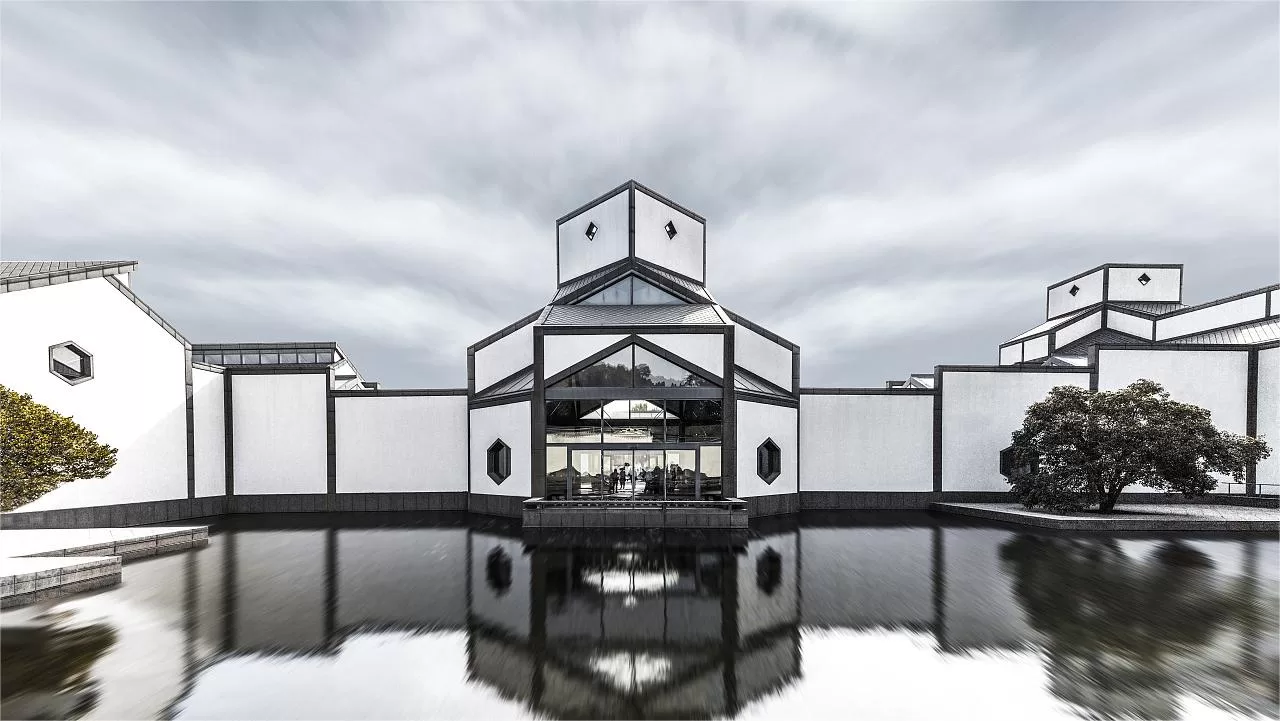

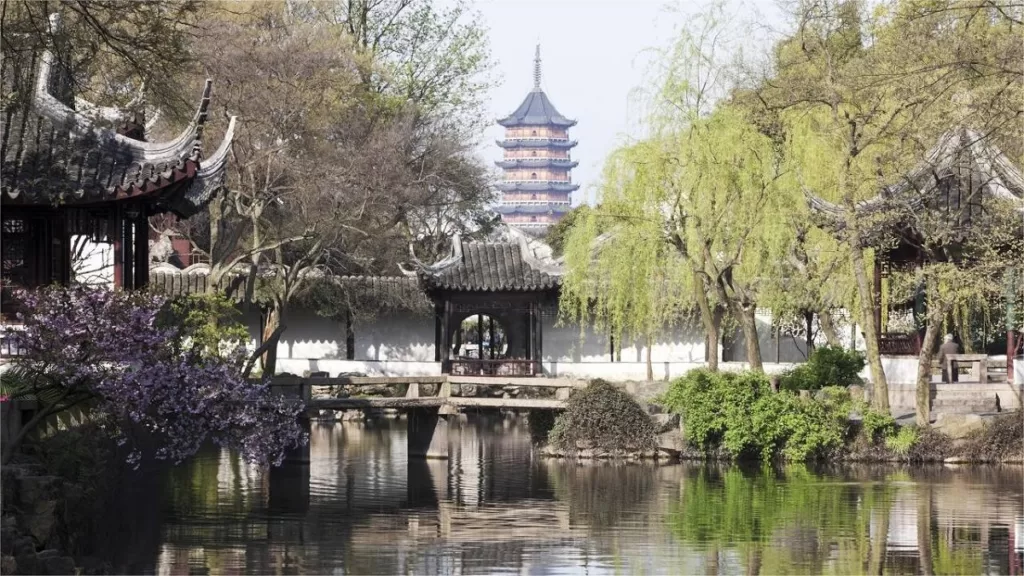

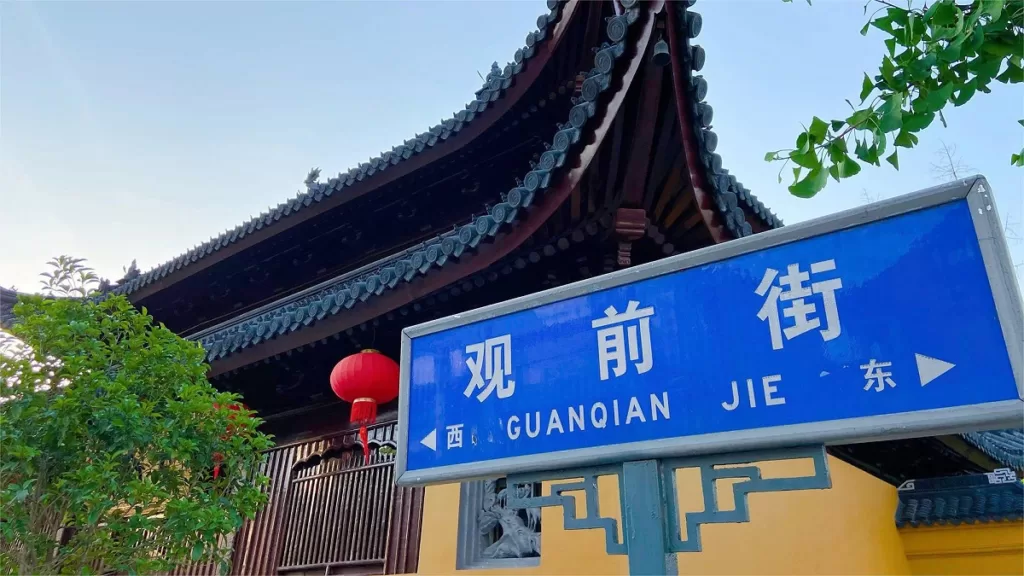
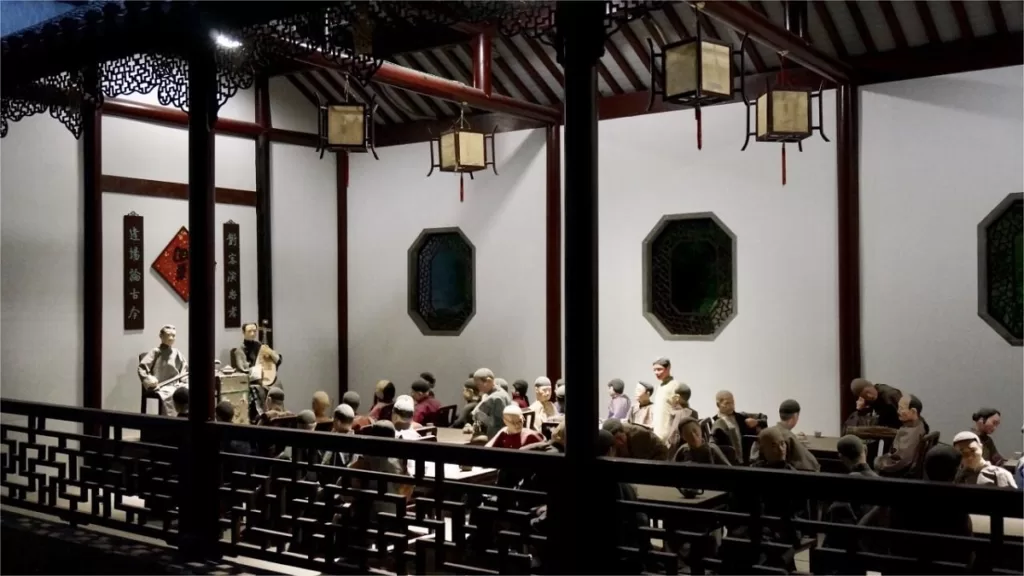
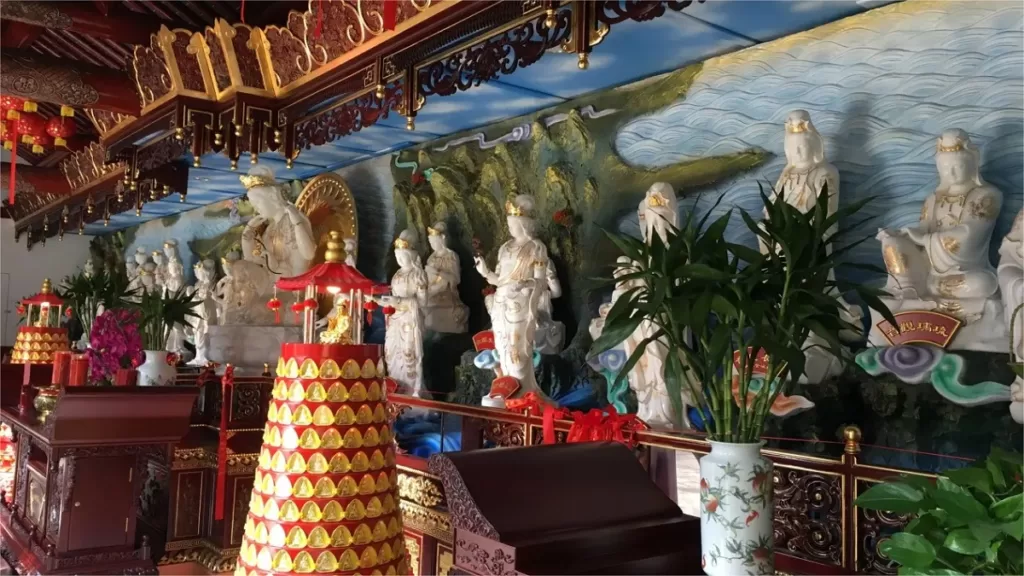


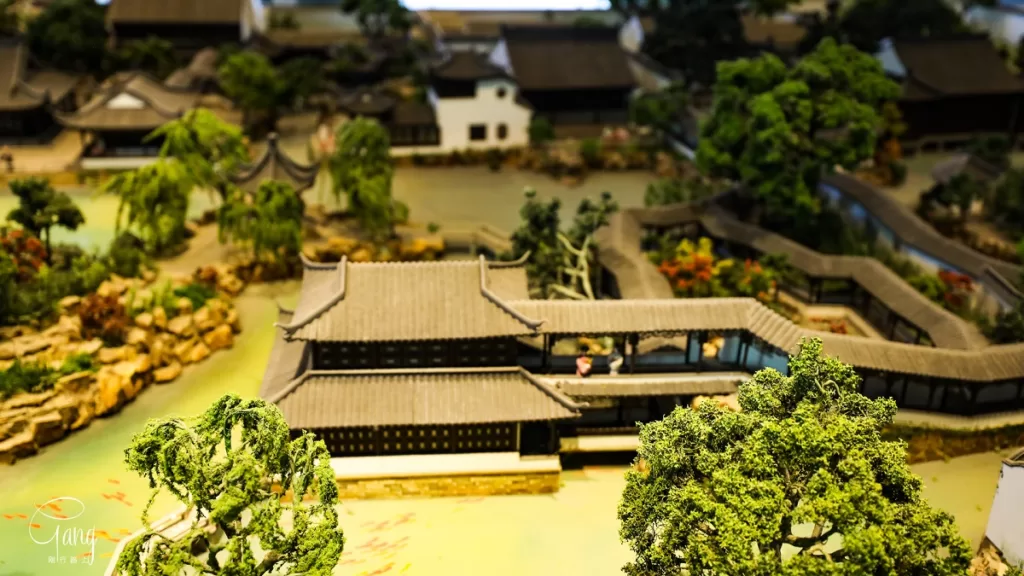

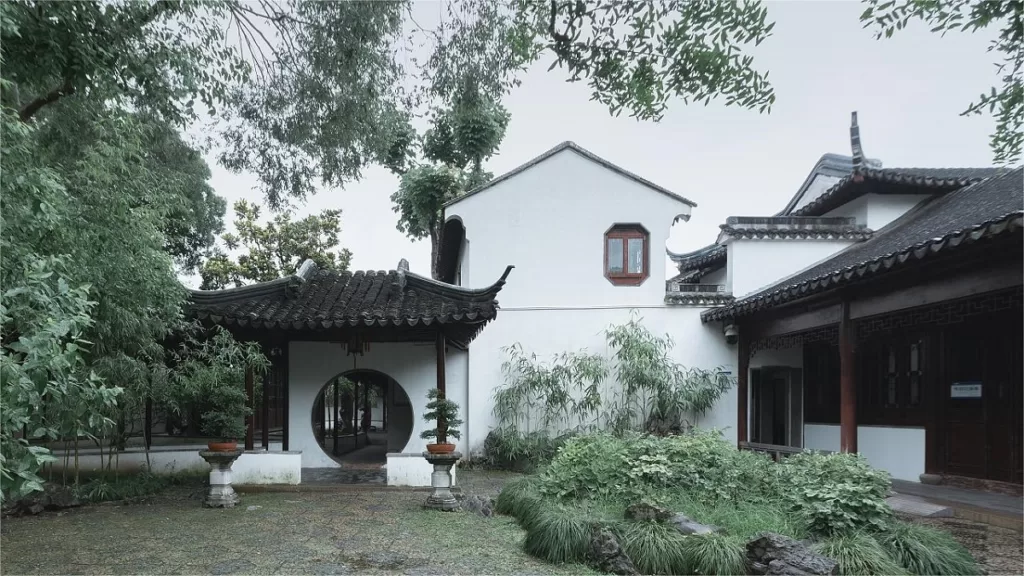


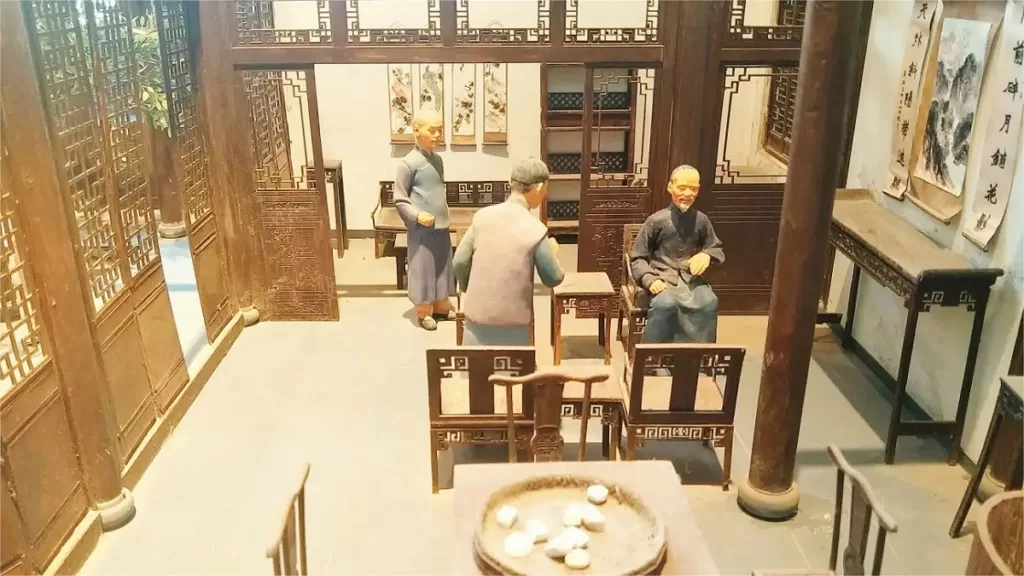

The pond at the Suzhou Museum is now filled with water again, and the koi fish are now back.
The Suzhou Museum has three treasure exhibits, but it’s a pity that two of them are replicas. It’s a waste of 60 RMB for the VR audio guide. However, the cultural products were quite good; I ended up spending over 700 RMB on them.
Recently, the Suzhou Museum West Wing has a special exhibition in collaboration with the British Museum called “Kings of Assyria”. It has an exotic charm, and the exhibition features a lot of interactive elements, including scent stations and light projections. Exploring it is quite interesting. Moreover, compared to the main building, the West Wing is much less crowded.
We scheduled our visit for 9 AM. It wasn’t too crowded, and the weather was pleasant, making it a very comfortable experience.